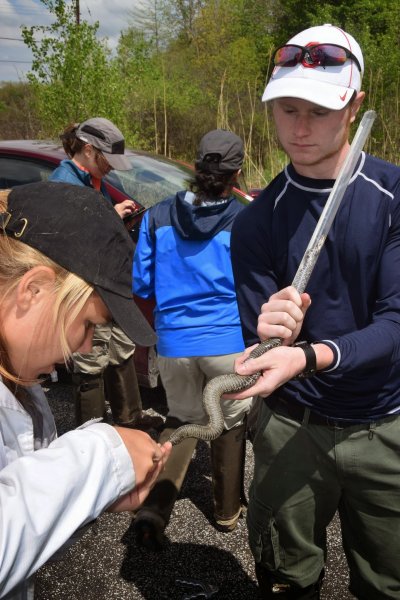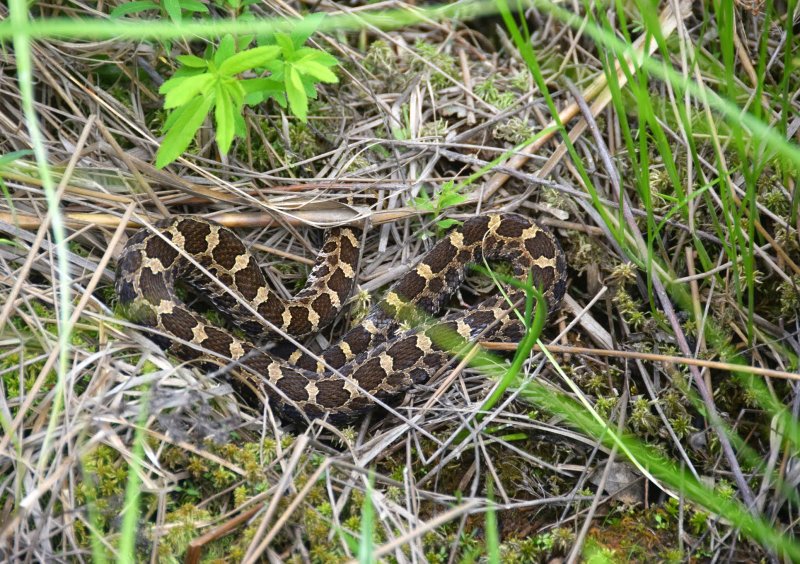
Katie Backus, second-year veterinary student at Ohio State (left), acquires a blood sample from a massauga rattlesnake in northeastern Ohio in the summer of 2015.
This summer, second-year student at The Ohio State University College of Veterinary Medicine Katie Backus completed a comprehensive health analysis of massasauga rattlesnakes in partnership with the Ohio Department of Natural Resources. The data will be studied along with land use and habitat condition.
Eastern massasauga rattlesnakes dwell in northeastern regions of the U.S., including Ohio. The species has been a candidate for the Federal Endangered Species Act since 1999, according to the U.S. Fish and Wildlife Service.
The decline of massasauga rattlesnake populations is mostly due to human and agricultural activity as well as habitat loss or destruction. The snakes typically inhabit wetland areas.
The research team tracked and captured massasaugas to acquire blood samples, swab tests for fungal disease and height and weight measurements. They’re also reviewing data on water quality, vegetation density and land use in surrounding areas. Water that flows downstream from farms may contain chemicals associated with agricultural runoff, which has been observed to cause adverse effects in other species.
“Agricultural runoff could be weakening massasaugas’ immune systems,” Backus said, “Possibly predisposing them to fungal diseases and other health issues.”
Backus and her team, led by Greg Lipps, amphibian and reptile conservation coordinator and conservation biologist, were able to capture approximately 55 massasaugas in northeast Ohio. Around 20 were recaptures. The results from fungal disease tests are still processing.
To capture the massasaugas, Backus and her team would walk around in protective gear with snake tongs and bags. Once captured, they would guide the snakes head-first into a plastic tube to prevent biting (as they are venomous), to perform diagnostics. A stress measure – a hormone called leptin – was taken into account during the health assessment.
The results of the study will help the ODNR with conservation efforts, as not much is currently known about the relation between massasauga health and habitat. The ODNR will likely try different techniques on different plots of lands to see what works for the snakes, Backus said.
“I learned so much throughout this process,” she said. “Not only handling snakes, but about government wildlife departments, the history of Ohio’s environment and ecology in general.”
Veterinary medicine plays many roles, and conservation medicine is an important one. This study is an example of how veterinary research can intertwine factors of human, animal and environmental health.

Comments are closed